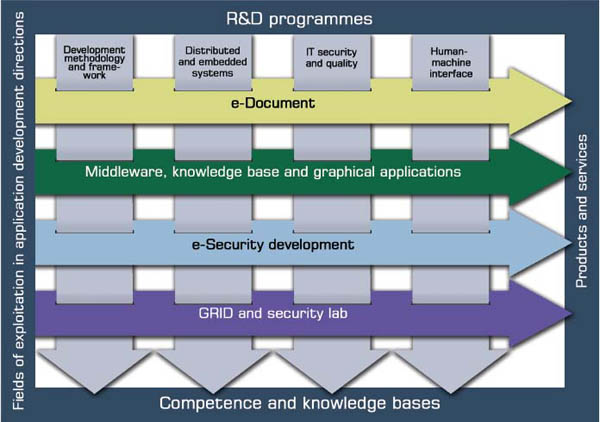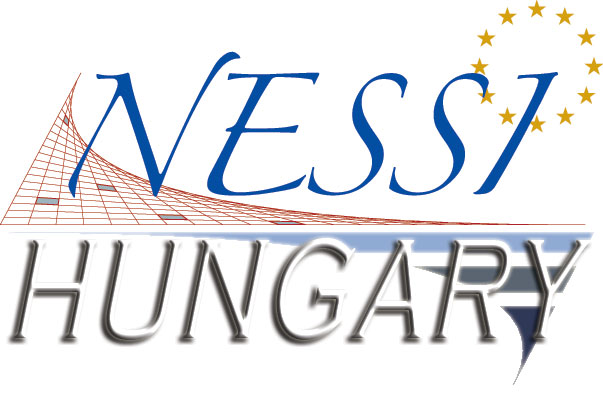-
The applications are not well adapted to the needs of the users. It is partly because of the lack of established, consensual domain models. Their lack is not well understood, and the problems arising from this fact appear to be flaws in IT systems themselves. On the other hand, these systems are difficult to master, and they are not well accommodated to the workflow and the work environment, thereby placing an unnecessary burden on the user.
-
The security and quality of IT systems are not satisfactory. Substantial functionalities may fail and important data may be lost due to system crashes, while security holes make users vulnerable. There is little support to secure operation, and interfaces to other systems are lacking. However, these apparently simple problems can only be solved by complex developments.
- All research groups have yielded significant scientific results, which manifested themselves as publications, theses and know-how. Moreover, they were also put to use in the actual developments and arrangements have been made concerning their future exploitation.
- Several scientific results were obtained by means of a joint work of multiple research groups.
- The problems raised by the industrial members of the consortium generated new research tasks on several occasions.
- Consortium membership for the university partners (departments) has led to increased professional cooperation. The research programmes stimulated, directly and indirectly, university education and helped modernise the curriculum.

Computer science and information technology occupy a much less significant position in the economy, society or our everyday life than what would be possible by the scientific and technical level of the field. The two most important reasons hindering a more intensive role:
For these reasons, BME (IT)2 was focusing its professional activity on trying to provide users with IT systems that satisfy their needs and that can be used efficiently.
The separate fields of information technology allow independent research to be carried out, and the experience gained can be applied in numerous other domains as well. Development could be carried out under favourable conditions, as the consortium unites experts from a variety of disciplines allowing them not only to carry out intertwined research programmes, but also to nurture a wide range of applications in other domains as well. According to the work scheme set up in the first year, that is 2006, the work of the Knowledge Centre is categorized into research programmes and application development projects. Research programmes are organised on the basis of professional rationale and provide a steady framework for long term work. Application development projects on the other hand aim at developing specific products or services and, as such, are generally developed in co-operation with our industrial partners. These projects put into practice the achievements of research, while raising new research problems as well. Application development projects are intermittent, and are subject to the time and resource constraints typical of projects. Considering professional and organizational aspects, we have categorized projects into main application development groups. Each group is headed by a project director coordinating the pertinent projects.

| Development methodology and framework | Distributed and embedded systems | IT security and quality | Human-machine interface |
The relationships between the research programmes and the main application development groups can be seen in the matrix. above This shows that the scientific achievements of the research groups are used in various projects and each project relies on the results of several research programmes. The organisational hierarchy of the Knowledge Centre was formed with the project structure borne in mind, as the projects require firm management due to their money and time constraints. Research programmes are operated by means of another organisational channel (Scientific Council, deputy manager in charge of scientific affairs, heads of programme, Scientific Forum) that mainly uses co-ordinating devices.
Accordingly to the work scheme we present the objectives of the research programmes and the most important activities, and finally, we describe how the programmes relate to application development projects. The specific achievements (publications, documents, products and services the projects gave rise to) are described in detail at the presentation of the application development projects.
Main characteristics of research activity during the operation so far:
Based on the professional community that was established, and on the prospect of ongoing research activities, the Knowledge Centre fully intends to continue its operation.






